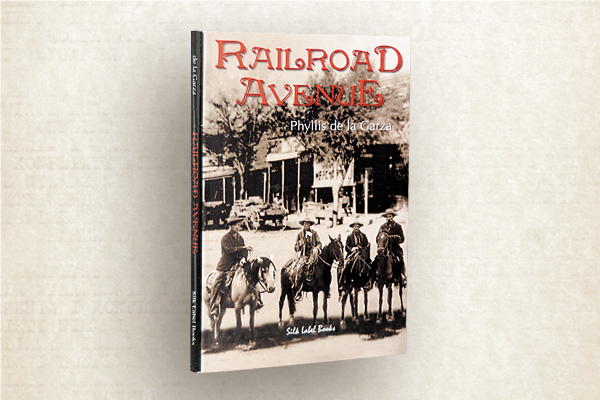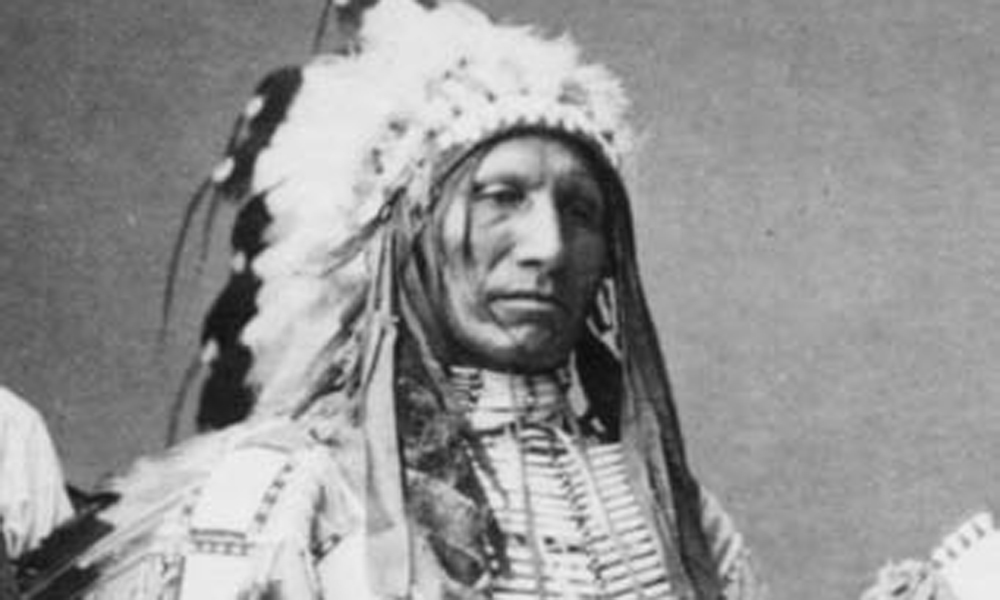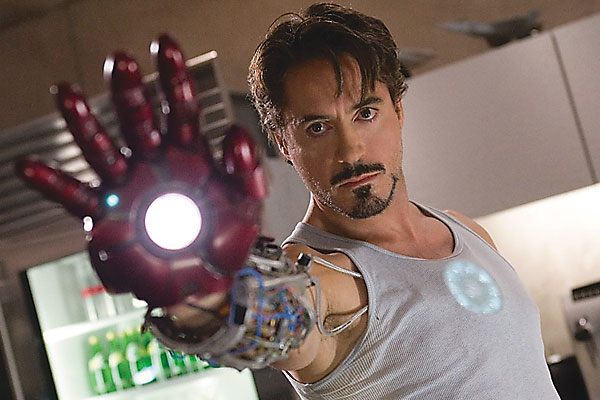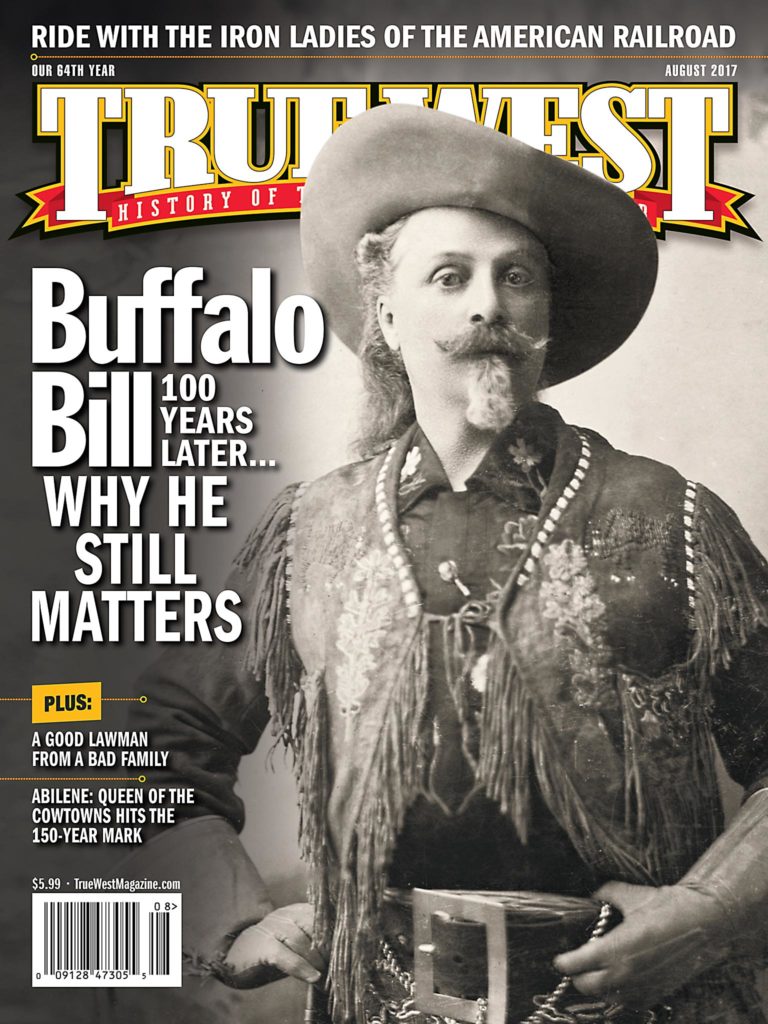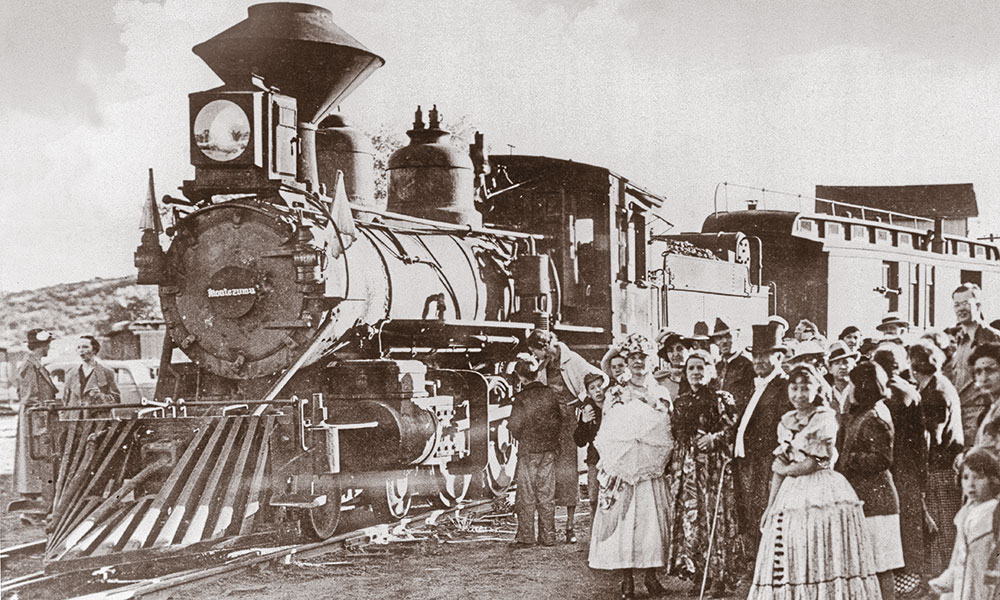
The Cumbres & Toltec Scenic Railroad is a historic narrow-gauge railway that operates between Chama, New Mexico, and Antonito, Colorado, on the D&RGWRR 1880 extension line. In 1935, Paramount Pictures used the railroad’s locomotive #168 in the Texas Rangers, directed by King Vidor and starring Fred MacMurray and Jean Parker.
– Courtesy Cumbres & Toltec Scenic Railroad –
The first trip I took by train was an hour-long journey from my hometown in Norborne, Missouri, to Walt Disney’s hometown in Marceline, Missouri. I was seven and the 200-square-foot depot where I purchased my ticket was a hub of activity. The station agent was a one-man show, answering phones, selling tickets and handling the baggage. I was preoccupied with the framed pictures of various destinations trains could take travelers that lined the walls of the depot. Brochures with fold-out maps of faraway locations filled the shelves below pictures of Colorado, Oregon and Wyoming. Those images and maps made me want to go west.
The Norborne Depot fell into disrepair and was eventually torn down. The depot in Marceline is now the Walt Disney Hometown Museum. Many notable stations have been converted to museums. Historic rail lines, locomotives and passenger cars have been restored and beckon visitors to embark on excursions to entertain and educate.
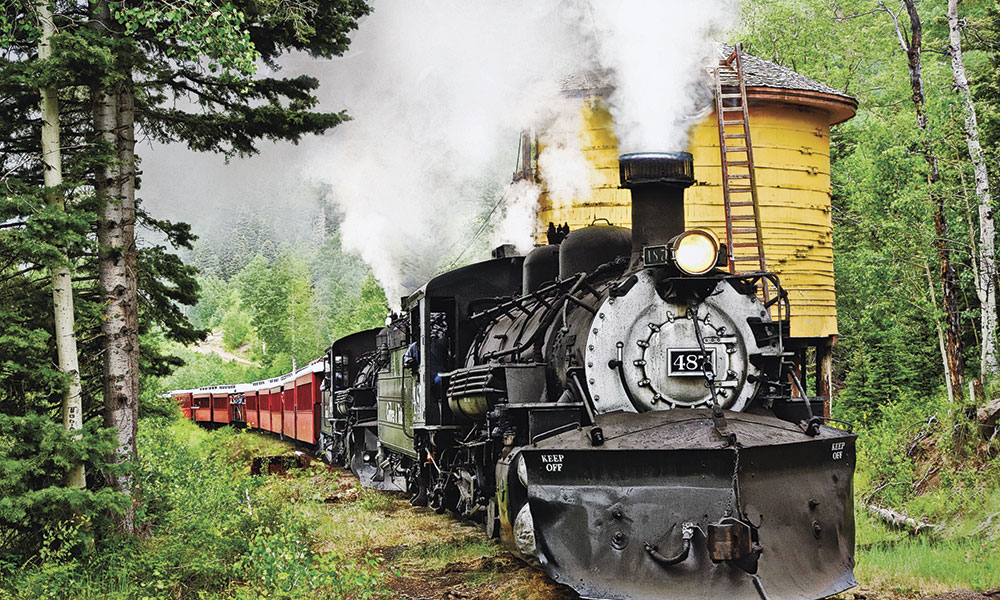
The Cumbres and Toltec Scenic Railroad’s 92-year-old coal-fired, steam-powered narrow-gauge Baldwin K-36 locomotive #487 charges past Cresco tank on its way to Cumbres Pass.
– Courtesy Cumbres & Toltec Scenic Railroad –
A heritage rail trip today offers a ride into yesteryear. Passengers discover the joy of rail travel and learn about the men and women who built our nation’s great railroads…and made train travel possible for everyone wanting to see the West.
When the last spike was hammered into the steel track of the Transcontinental Railroad on May 10, 1869, at Promontory Point, Utah, Western Union lines sounded the glorious news of the railroad’s completion from New York to San Francisco. For more than five years an estimated four thousand men, mostly Irish working west from Omaha, and Chinese working east from Sacramento, moved like a vast assembly line toward the end of the track.
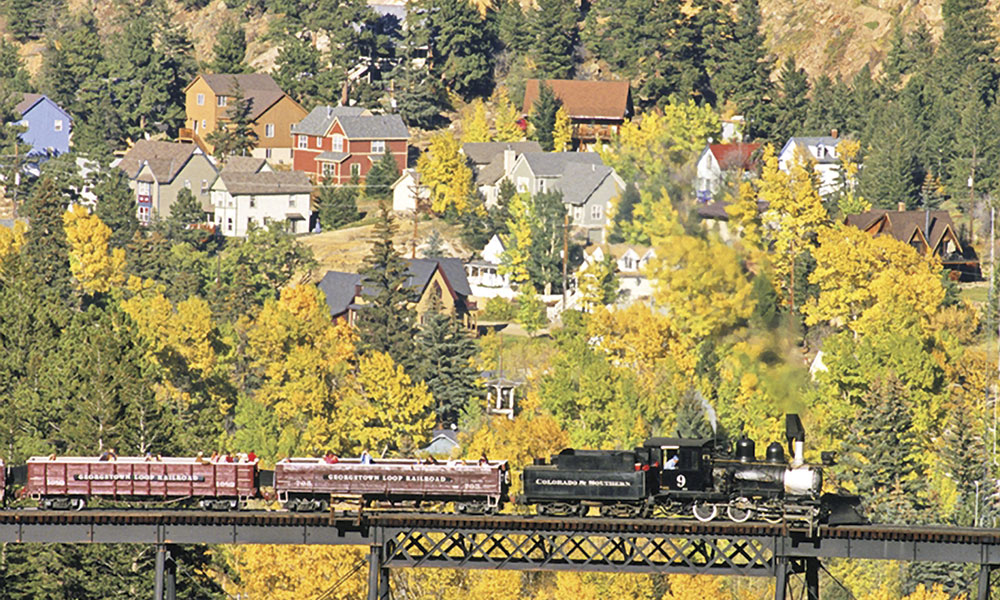
Built in 1884, Colorado’s Georgetown Loop Railroad is one of the engineering wonders of the Rocky Mountain state’s historic narrow gauge rail lines. Passengers in 2017 will enjoy the thrill of riding on historic rolling stock pulled by a steam-driven locomotive across the new High Bridge.
– Gary A. Haines/GrizzlyCreekGallery.com –
Editorials in newspapers and magazines praised the accomplishment and some boasted that the work that “was begun, carried on, and completed solely by men.” The August edition of Godey’s Lady’s Book reported, “No woman had laid a rail and no woman had made a survey.” Although men had handled the physical task of building the railroad, women made significant and lasting contributions to the historic operation.
The female connection with railroading dates as far back as 1838, when women were hired as registered nurses/stewardesses in passenger cars. Those ladies attended to the medical needs of travelers and also acted as hostesses of sorts, helping passengers have a comfortable journey.
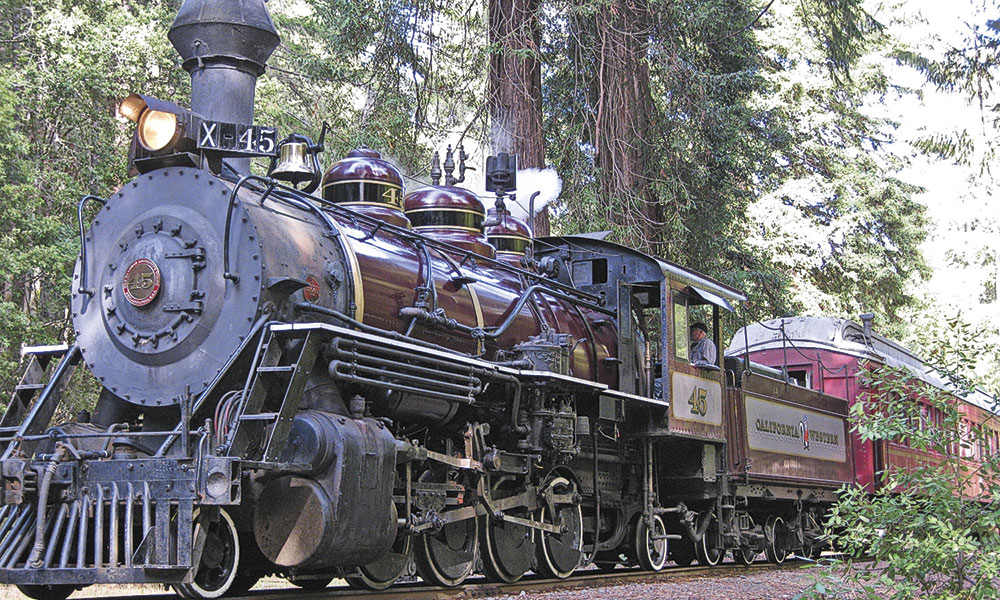
The Mendocino Railway Company’s Skunk Train (above) is headquartered amidst the redwoods of Fort Bragg, California. Modern-day travelers on the “Redwood Route” will travel over the California Western Railroad line built as a logging train in 1885.
– Photo courtesy of the Skunk Train –
Susan Morningstar was one of the first women on record employed by a railroad. She and her sister, Catherine Shirley, were hired by the Baltimore and Ohio Railroad in 1855 to keep the interior of the cars clean and orderly. The feminine, homey touches they added to the railroad car’s décor attracted female travelers and transformed the stark, cold interior into a more welcoming setting.
Miss E.F. Sawyer became the first female telegraph operator when she was hired by the Burlington Railroad in Montgomery, Illinois, in 1872. The following year Union Pacific Railroad executives followed suit by hiring two women to be telegraph operators in Kansas City, Missouri.
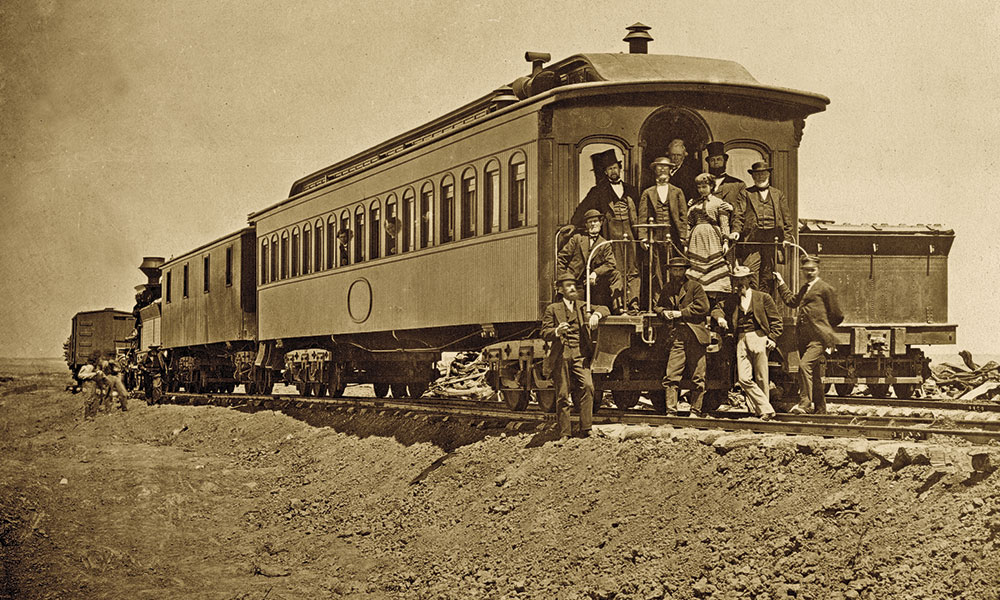
– Photo by Andrew J. Russell Western Americana Collection, Beinecke Rare Book and Manuscript Library, Yale University –
Inventor Eliza Murfey focused on the mechanics of the railroad, creating devices for improving how bearings on a rail wheel attached to train cars responded to the axles. The device—or packing, as it was referred to—was used to lubricate the axles with oil which reduced derailments caused by seized axles and bearings. Murfey held 16 patents for her 1870 invention.
In 1879, inventor Mary Elizabeth Walton developed a system that deflected emissions from the smokestacks on railroad locomotives. She was awarded two patents for her pollution-reducing device.
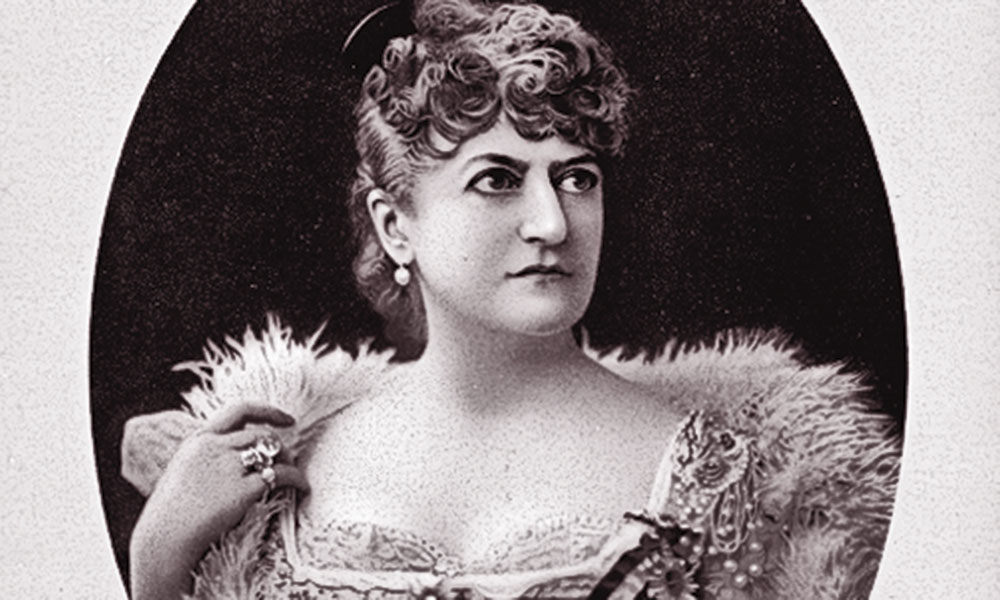
– Miriam Leslie photo courtesy of New York Public Library –
Nancy P. Wilkerson, a cattle rancher’s daughter from Terre Haute, Indiana, created the cattle car in 1881. Using a rack and pinion mechanism, she devised sliding partisans that separated the livestock and compartments for food and water troughs.
From the mechanical to the ornamental and a combination of both, women like civil engineer Olive Dennis and architect Mary Jane Colter made their mark on the railroad in the late 1890s. While employed with the Baltimore and Ohio, Dennis introduced reclining passenger seats and individual window vents that not only allowed fresh air into the car, but also trapped dust. Railroad lines across the country quickly adopted the refinements.
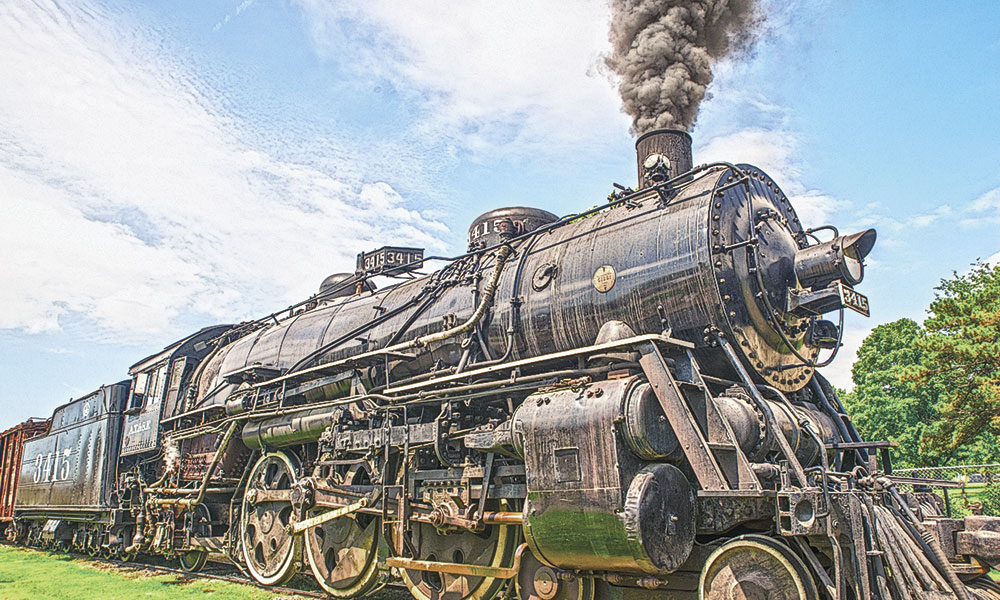
Visitors to Abilene in 2017 can take a comfortable ride on the historic, steam-driven Abilene & Smoky Valley Railroad.
– A&SRR photo by Paul Lord –
Mary Jane Colter was the chief architect and decorator for the Fred Harvey Company. Harvey developed the Harvey House restaurants and hotels that served rail passengers on the Atchison, Topeka, and Santa Fe Railway. Colter designed and decorated Harvey’s eateries and inns. She considered the La Posada Hotel in Winslow, Arizona, to be her finest work.
In addition to Colter’s architecture and decorating style, the “attractive and intelligent young women of good character” who worked at the Harvey Houses throughout the West further enhanced Fred Harvey’s establishments. Dressed in their starched, black and white shirts, bibs and aprons, the always beautiful Harvey Girls served cowhands, trainmen and travelers from Dodge City, Kansas, to Santa Fe, New Mexico.
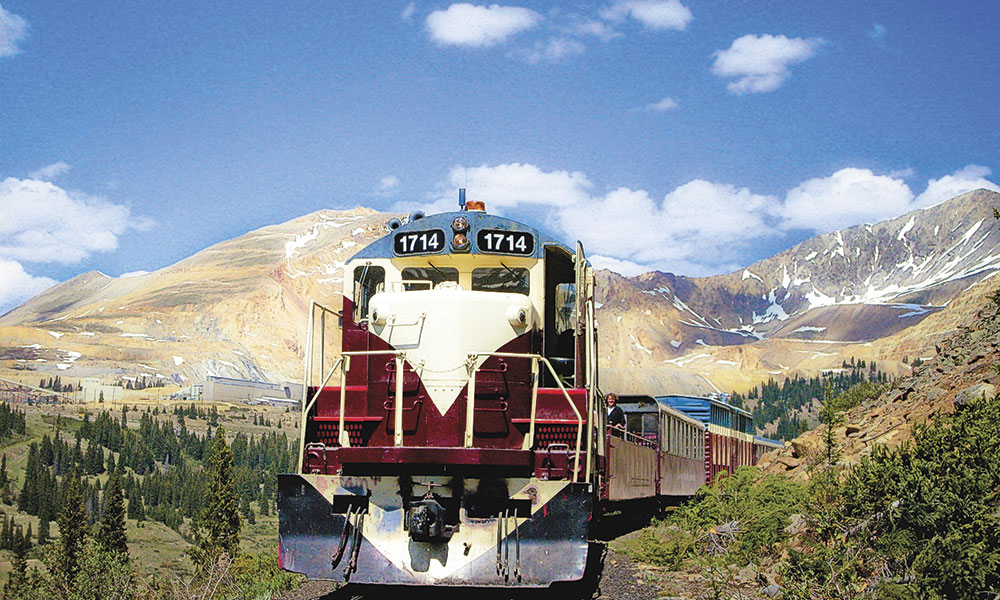
The Leadville, Colorado & Southern Railroad runs at over 10,000 feet on the awe-inspiring High Line of the former Denver, South Park & Pacific and Colorado & Southern lines.
– Photo courtesy of LC&SRR –
“The girls at a Fred Harvey place never look dowdy, frowsy, tired, slip-shot or overworked,” an article in the June 22, 1905, edition of the Leavenworth Times noted. “They are expecting you—clean collars, clean aprons, hands and faces washed, nails manicured—there they are, bright, fresh, healthy, and expectant.”
Two of the most desirable locations for Harvey Girls to work were the Cardenas Hotel in Trinidad, Colorado, and the El Garces in Needles, California. Both were beautifully situated and uniquely designed. The El Garces was referred to as the “Crown Jewel” of the entire Fred Harvey chain.
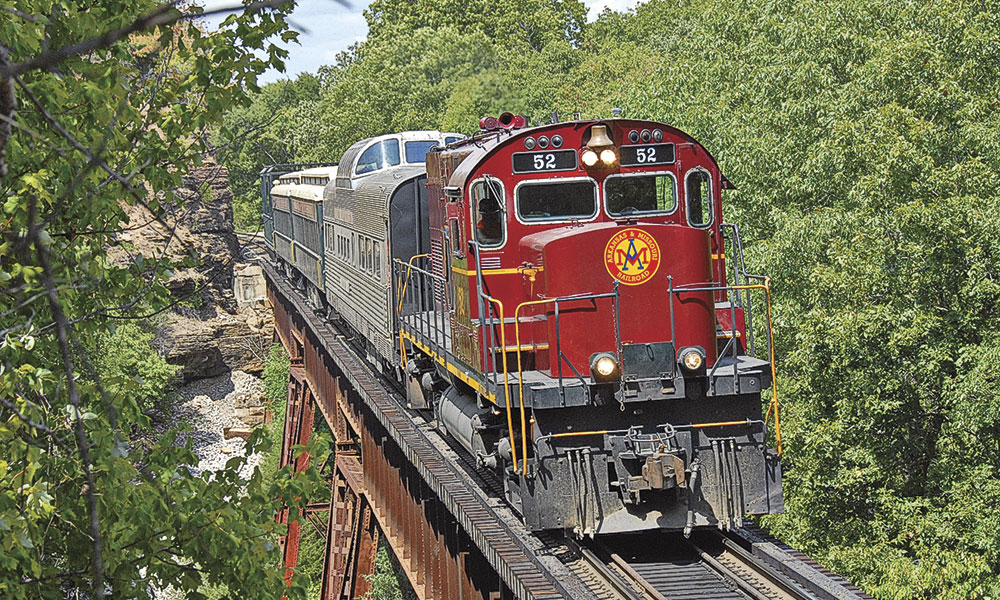
The Arkansas & Missouri Railroad has special excursion trains throughout the year with refreshments and meals served in its specialty cars, including the historic “Silver Feather” dome car.
– Photo courtesy of A&MRR –
Soiled doves capitalized on the business opportunities the completed railroad line introduced. Ambitious madams acquired their own cars and transformed the interior into parlor houses. Independently contracted locomotives would transport the rolling houses of ill repute and the wicked women aboard to various cowtowns along the Southern Pacific Railroad.
Highly principled ladies were able to make just as much of a fortune from the railways as disreputable women. Sarah Clark Kidder, the first female railroad president, proved that women were just as capable of running a rail line as men. In 1901, Kidder took over as head of California’s Nevada County Narrow Gauge Railroad. The rail line, which hauled lumber, farm produce and gold destined for the United States Mint in San Francisco, flourished during her twelve-year rule.
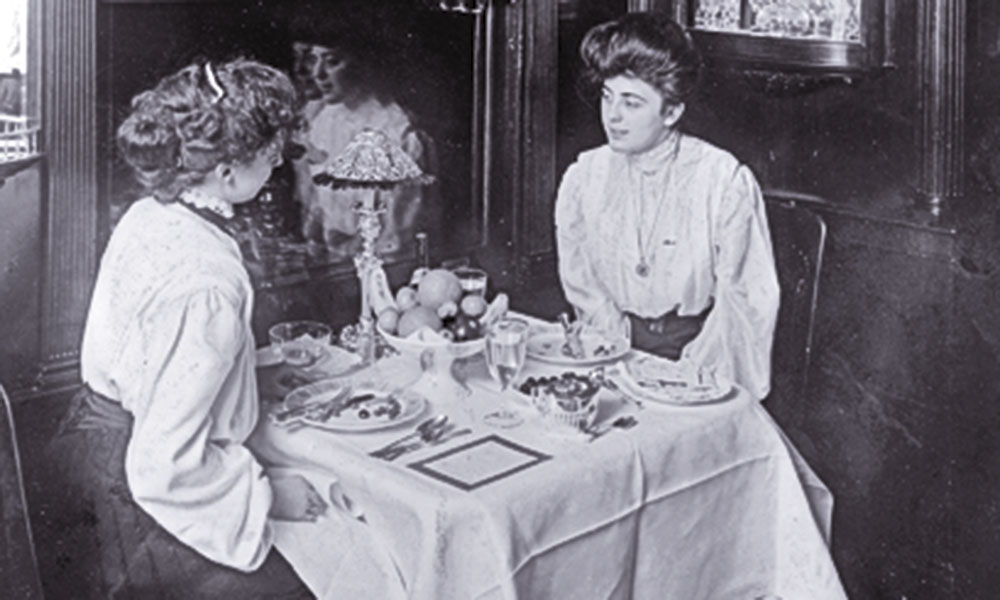
– Photo courtesy of Library of Congress –
Cora Mears Pitcher took over as president of the short line Silverton Northern Railroad in southwest Colorado in 1931. Her father, Otto Mears, built the railway in 1885 to support the lucrative mining business in the area. The Silverton Northern Railroad ran from Silverton up the Animas River to Eureka. Cora took great pride in assuming responsibility for the line and in preserving the memory for her father who operated a successful copper mine in the region.
Famed stage actress Lillie Langtry made traveling by rail a glamorous experience. The interior of her private car, named the Lalee, featured upholstered seats, carved woodwork inlaid with silver bands, plush carpeting and a ceiling of diamond-shaped form on a light tinted lavender background. In 1904, Lillie and the Lalee traveled to Val Verde County, Texas, to meet the well-known Justice of the Peace Judge Roy Bean. The judge was a great admirer of Lillie’s and had written her several times expressing his devotion. Sadly, the judge had passed away before the actress’s visit.
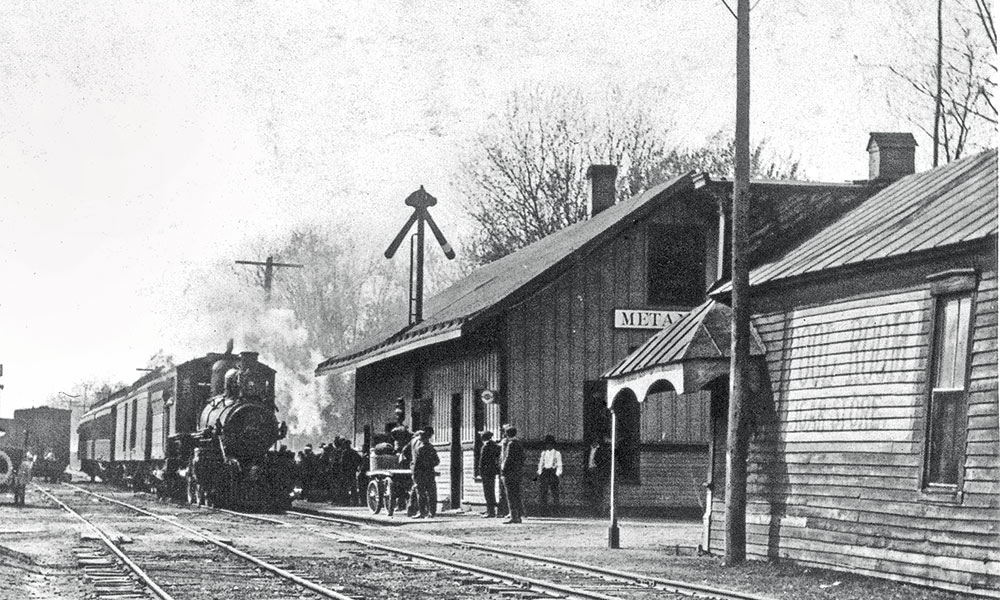
– Photo courtesy of Whitewater Valley Railroad –
Popular playwright and actress Eleanor Robson Belmont also traveled across the country in her own private car. Velvet curtains and a crystal chandelier adorned her palatial suite. “A private railroad car is not an acquired taste,” she told a reporter with the San Francisco Call Chronicle Examiner newspaper in 1906. “One takes to it immediately.”
Publisher and author Miriam Leslie might have done more to promote traveling by rail than any other woman in the 19th century. In 1877, she embarked on an extravagant five-month train trip from New York to San Francisco. Onboard the Union Pacific she visited popular Western locations including Salt Lake City, Cheyenne, Wyoming, and Denver. Miriam referred to the ride across the frontier as “exhilarating” and looked forward to seeing every square mile of the towns and cities on the itinerary.
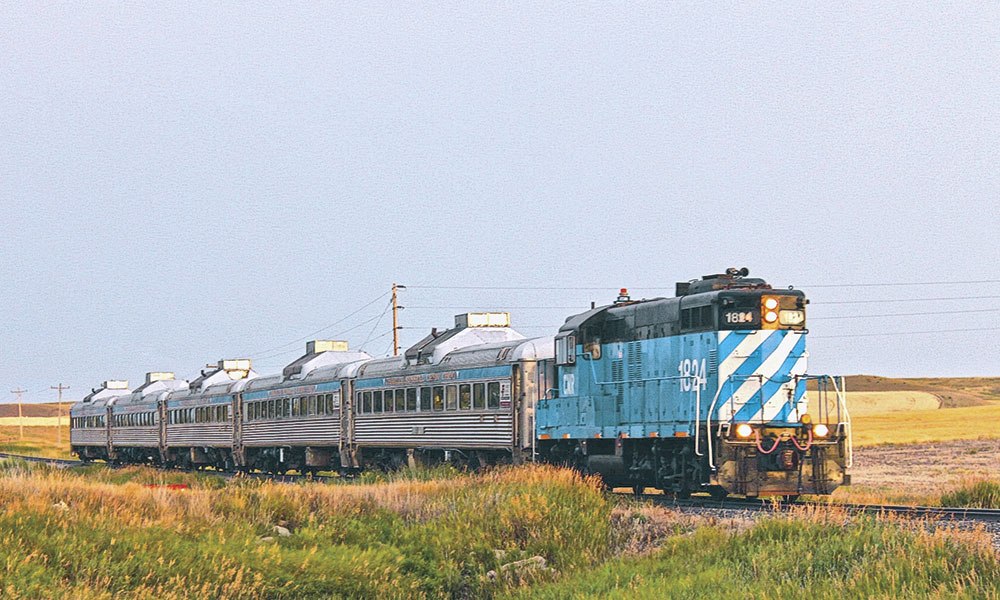
The Charlie Russell Choo Chew operates a dinner train on the CMST&PRR’s old tracks between Lewistown and Denton.
– Photo courtesy of Charlie Russell Choo-Chew –
“Wyoming was like a new world. No wilder or more grandly lonely landscape has yet unfolded,” Leslie wrote. “Going to sleep in Cheyenne we awoke in Denver, our car having been attached during the night to a train upon the Denver Pacific Railroad. Denver lies broadly and generously upon a great plain sloping toward the South Platte, with the grand sweep of the Rocky Mountain chain almost surrounding it. A large number of handsome houses have been built on the western side of the city, facing the mountain view; and one foresees when Denver is forty instead of twenty years old, this will be the fashionable and charming quarter.”
Besides the Denver Pacific Railroad, Miriam enjoyed numerous treks on other short line railways like the Virginia and Truckee Railroad that connected to the Central Pacific. “There is a rise of 1,700 feet from Carson to Virginia City whither we were bound, and the train winds heavily up between mountain walls of dust-brown rock,” the author wrote of her journey through Nevada. “Not a tree, shrub, herb, nor blade of grass grew. There was nothing with life or motion in it except the brawling Carson River, which plunged magnificently down between these mountains on even a steeper grade than the road winds up. What a daunting view!”
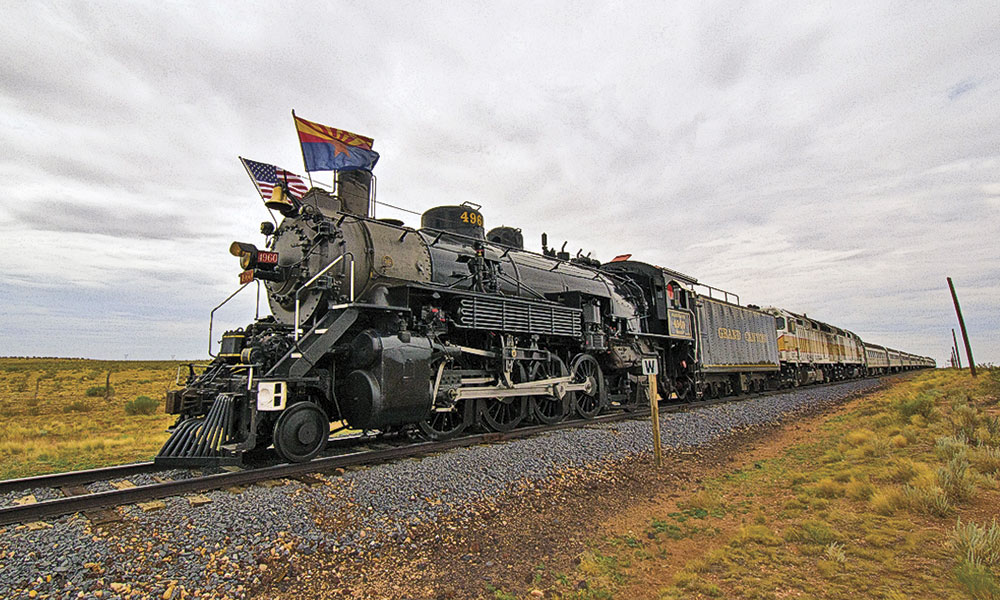
From its inception as a AT& SF Railway extension line from Williams, Arizona, to Grand Canyon National Park in 1901, the Grand Canyon Railway has thrilled passengers with its spectacular run to the South Rim.
– Photo courtesy of Grand Canyon Railway & Hotel –
Leslie’s articles about the trip were published in Frank Leslie’s Illustrated Newspaper, a popular publication she co-owned with her husband. She also wrote A Pleasure Trip from Gotham to the Golden Gate, a book about the journey. Leslie described in glowing terms the many scenes she passed en route from New York to California and served as a travel guide for readers coast to coast. The transcontinental tour cost more than $20,000.
Women inspired to embark on a railroad journey after reading A Pleasure Trip from Gotham to the Golden Gate were required to follow a number of rules for the trip. According to the Ladies’ Book of Etiquette, a woman was to be punctual and dress in plain, dignified clothing. She was to carry nothing more than a traveling satchel, or a fashionable carpet bag if staying overnight. The carpet bag was to contain grooming items, a mirror, reading material, crackers or a sandwich, a large shawl, night clothes and a woolen or silk nightcap. Women were to sit quietly and not fidget. Such behavior was cited as a sure indication that she was either ill-bred or ill at ease in society.
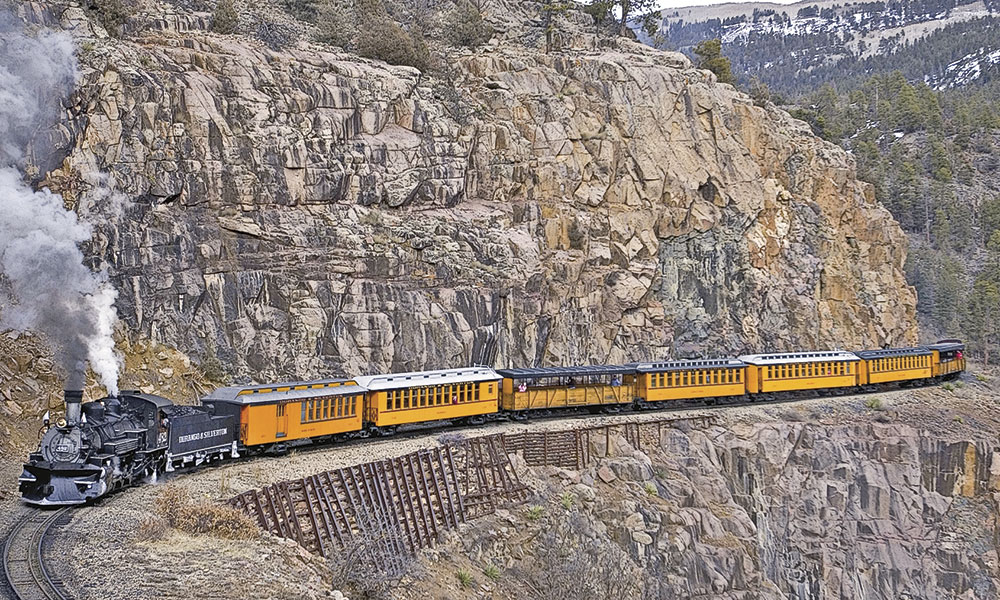
In 1895, rail pioneer Otto Mears built the Silverton Northern Railroad further up the Animas River Canyon to transport ore and passengers to the Durango and Silverton Narrow Gauge Railroad.
– Photo of Silverton Northern Railroad True West Archives –
The appalling behavior of a giddy mail-order bride and her groom were the subject of much talk when they boarded the Union Pacific Railroad in Riverside, California, in 1886 heading to San Francisco. An article in the Riverside Daily Press on July 10, reported that the blissful couple were fawning over each other so much that their fellow passengers complained.
“Now what’s the use of it? When a couple get married and go off on a bridal tour, why so misbehave themselves as to be ‘spotted’ by every man, woman, and child on the train for ‘fresh fish?’, the story read. “How silly the thing must appear to them when they look back after a period of six months. Are we fools when in love, and are we idiots when we marry?”
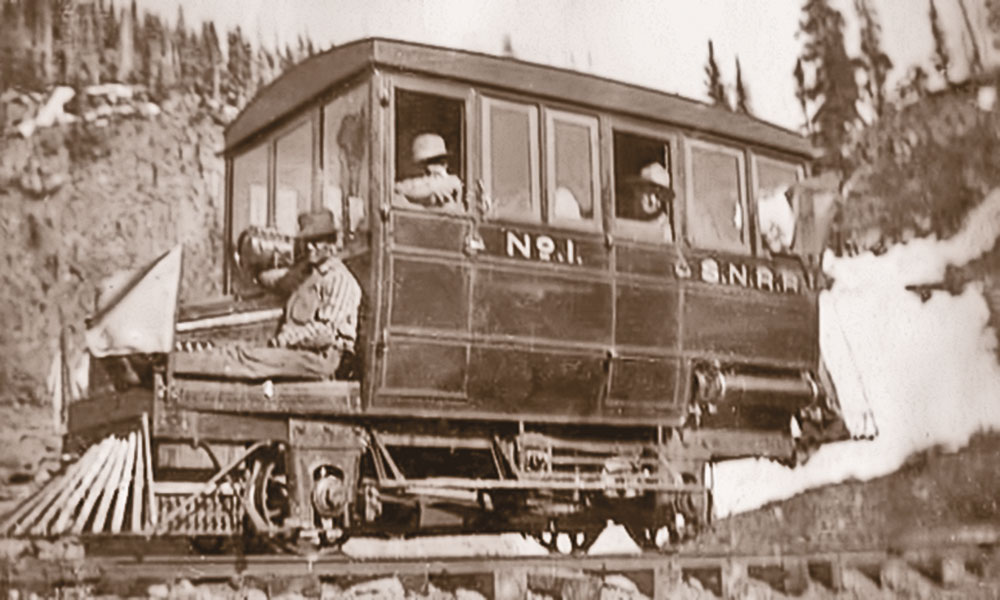
– Photo courtesy of D&SNGRR –
A baggage man scolded the mail-order newlyweds but they only held on to one another more tightly. Four of the women aboard formed a committee and promised to take the matter to the legislature if the railroad company could not protect its passenger from rude behavior. The conductor came to speak to the women and ask them not to hold what had happened against him or the railroad.
“Well, the long and short of the matter was that the passengers rode 150 miles wishing they had not gotten on the train, and resolving that the thing would never happen again—never,” the Riverside Daily Press article continued. “The women all agreed that they would
walk first.”

